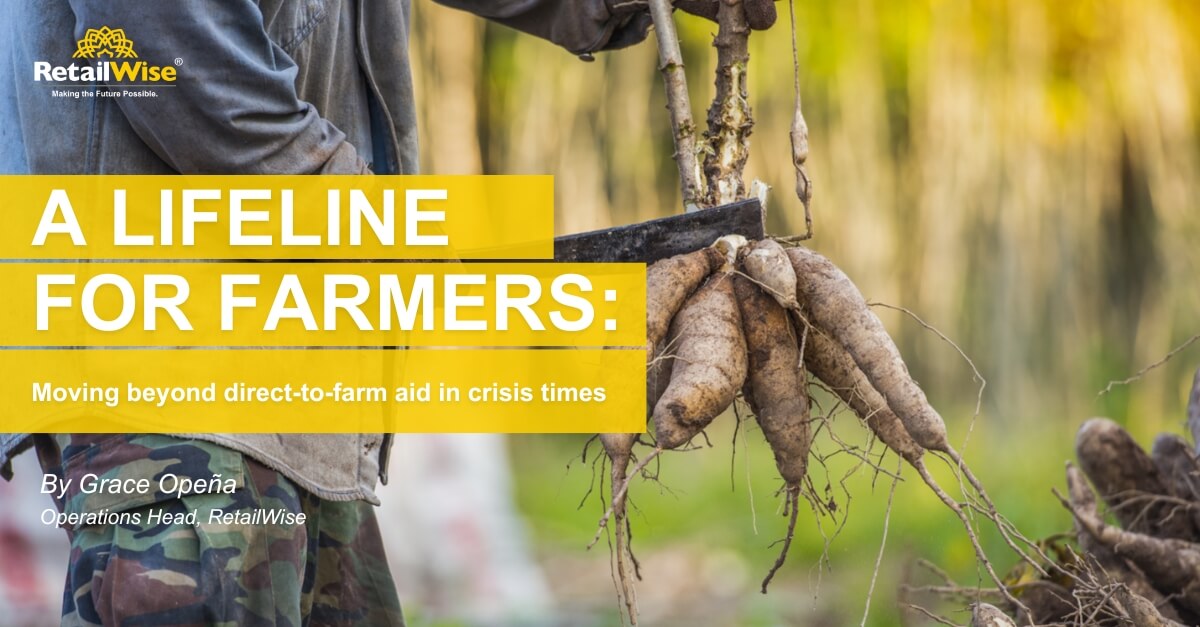
The recent trail of typhoons that hit the country has had devastating effects on Filipinos. Many have lost their homes, livelihoods, and tragically, their lives. Time and again, the resilience of Filipinos in the face of adversity makes headlines across various facets of society. Despite the heartache, Filipinos continue to show their strength in withstanding calamities.
Unfortunately, our crops have not been as resilient.

According to a report released by the National Disaster Risk Reduction Management Council (NDRRMC), the total agricultural losses in the country due to Typhoons Kristine and Leon have reached a staggering 6 billion pesos. One can only imagine the gravity of this loss for our hardworking farmers – who have toiled in the fields, looking forward to the harvest season. But in just a few days, a typhoon can wipe out everything.
In the recent years, the Direct-To-Farm (DTF) approach has emerged among retailers. This model has gained popularity among consumers as a win-win-win situation for the three key stakeholders: consumers, retailers, and farmers. Furthermore, this approach has helped consumers understand how much effort farmers put into feeding the nation. DTF has not only made products more accessible and affordable for consumers, but it also put a face to the food we eat.
While this model has worked and improved the situation for all stakeholders, the devastating effects of the recent typhoons prompt us to think of other ways retailers and farmers can support each other during such crises, which are becoming more frequent in the country.
To establish a system that supports both affected farmers and retailers looking for fresh produce to offer consumers, the following suggestions can be considered:
A centralized digital platform could be created for farmers to list products that survived the typhoon. While these items may not be in the condition, they are still safe for consumption. Retailers can access the platform to directly purchase these goods.
However, given the technological limitations in the country and farmers’ unfamiliarity with digital tools, it would be beneficial for an independent organization to gather this information from farmers and input it into the digital platforms.
Logistics support should be set up to connect farmers directly to retailers. This could involve partnering with delivery companies to ensure timely transportation, reducing further losses or damage to the produce.
Typhoons may damage products, making them less than “store perfect.” Retailers can benefit from purchasing these items at discounted but still reasonable prices. One of the biggest challenges for farmers after a typhoon is discarding their produce because it no longer meets quality standards. In some cases, they are forced to sell at deeply discounted prices, which hardly covers their expenses, let alone the cost of replanting for the next season.
At the store level, retailers can communicate that these products may not be in perfect shape but are still safe to consume. Moreover, by purchasing these “rescue crops,” consumers can feel good about supporting farmers during tough times. For example, stores could set up a dedicated “rescue crops” section or offer bundles or “resilient boxes” containing a variety of produce at discounted prices.
Maintaining consumer trust is essential. Retailers should be fully transparent about the condition of the produce by using clear tags or labels with full disclosure. Retailers can also emphasize that purchasing these imperfect products help support post-disaster recovery.
Retailers can partner with government agencies to educate farmers on how to recover financially after a typhoon. Additionally, retailers can commit to purchasing crops, ensuring that farmers have a guaranteed income stream post-disaster.
While the above initiatives will aid in recovery, some farmers will experience massive losses and need financial support to start over. Retailers could contribute to these funds in exchange for guaranteed supply arrangements.
As the saying goes, retail is always evolving. Purchasing directly from farmers and eliminating intermediaries is just the first step in building a more sustainable and transparent food system that benefits all stakeholders. As consumers increasingly demand fresh, high-quality and ethically sourced products, retailers and farmers must work together to meet this demand. By implementing the suggested action points, we can strengthen retailer-farmer relationships, contribute to nation-building and community resilience, and involve consumers directly in the process. After all, wise collaboration in retail ploughs the way to a sustainable future.
Until next time.
________________________________________________________________________________________________________________
About the Author

Grace Ann M. Opeña
Is the Head of Operations at RetailWise (formerly Euroasia Research Experts, Inc.). She is also the Division Merchandise Manager of Heyday for Beauty and Fresh Departments, implementing Direct-To-Farm Approach and advocating for rescue crops.